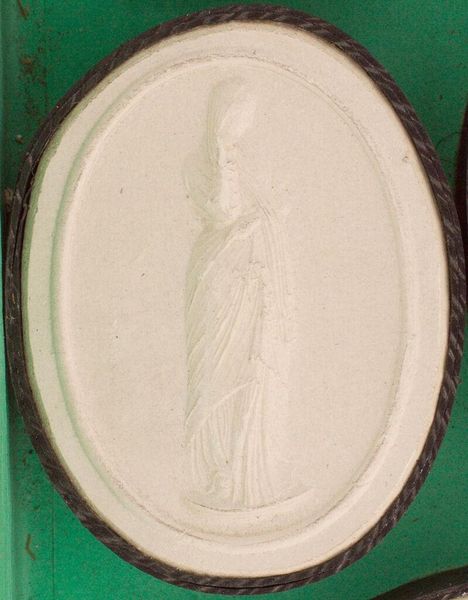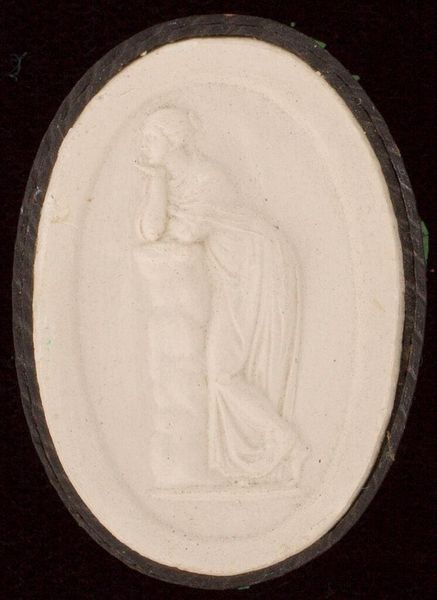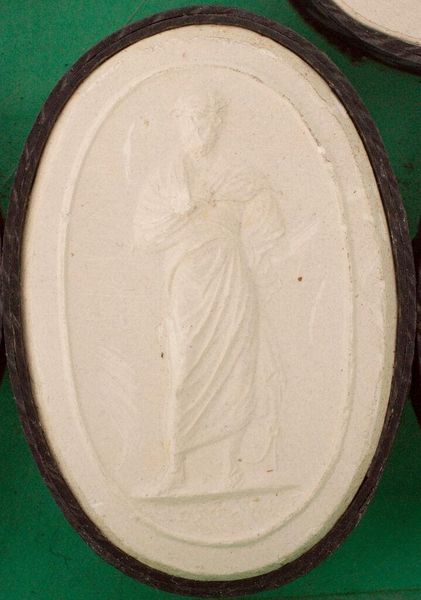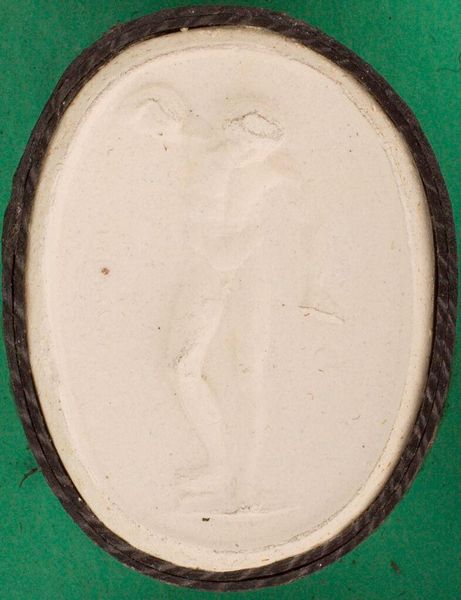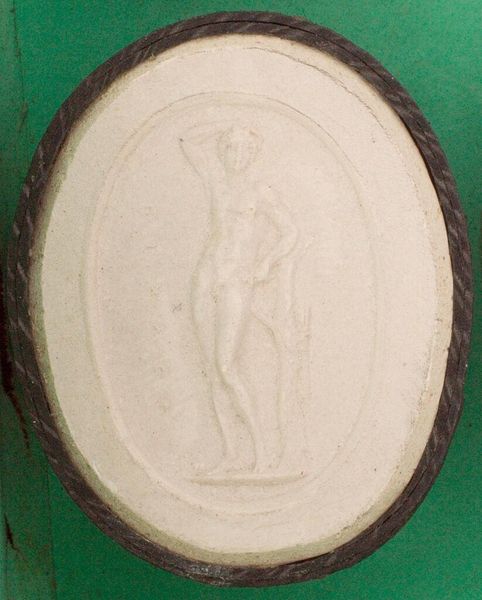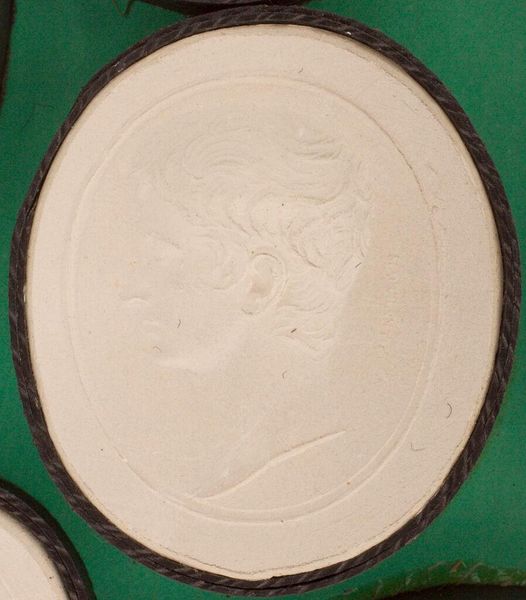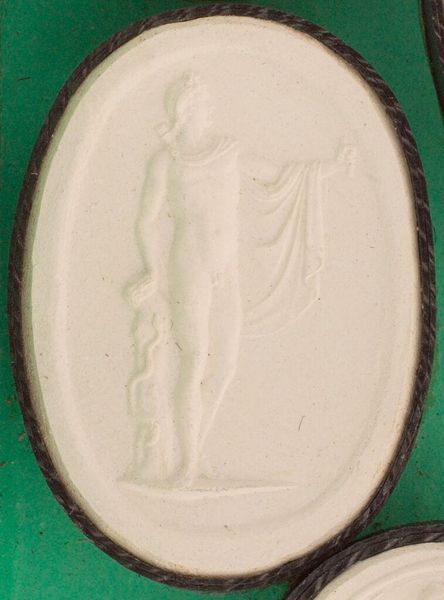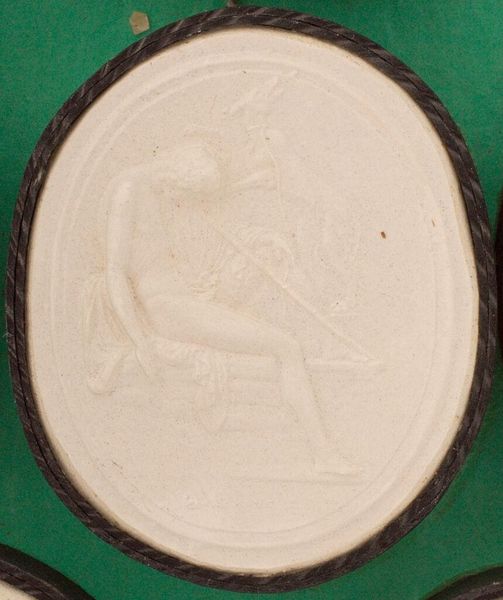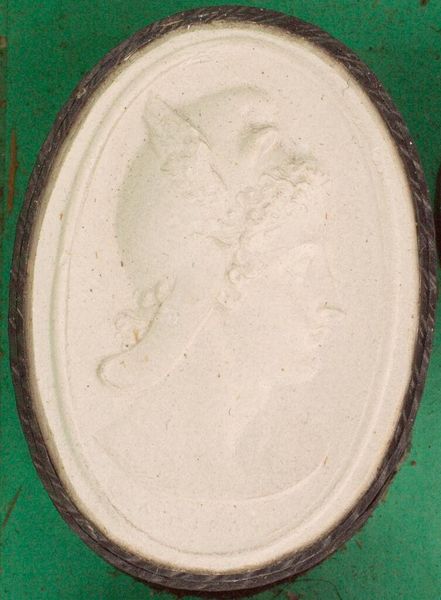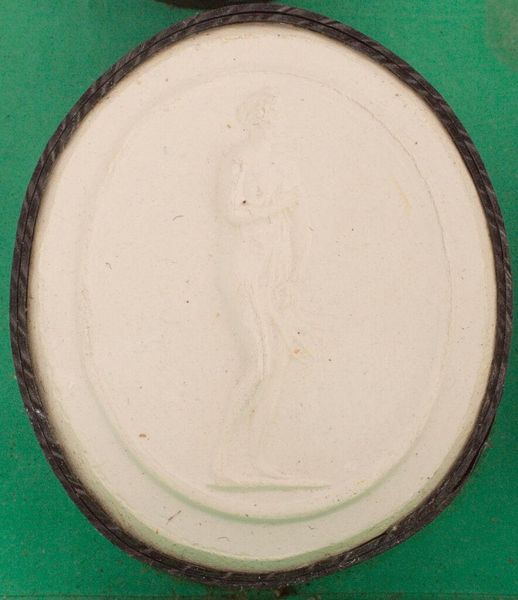
Dimensions: 3 x 2.1 x 1 cm (1 3/16 x 13/16 x 3/8 in.)
Copyright: CC0 1.0
Curator: This is an exquisite, miniature intaglio: The Muse Polyhymnia, after antiquity, attributed to the Pichler family. It resides here at the Harvard Art Museums. Editor: There's a delicate, almost ethereal quality to it. The carving, though small, feels monumental. Curator: Absolutely. The Pichler family, renowned for their gem engraving, played a crucial role in shaping the neoclassical taste, particularly through commissions from wealthy elites on the Grand Tour. Editor: It's intriguing how such a tiny object could carry so much cultural weight, essentially acting as a status symbol. What material is this made of? Curator: The intaglio is crafted from what appears to be a soft stone, allowing for the exquisite detail. The image of Polyhymnia, muse of rhetoric, was laden with meaning for educated patrons. Editor: To me, it speaks of a fascination with the past, but also, in its material, of a kind of labor of love, a craftsman meticulously shaping a durable substance into something of great beauty, for a select audience. Curator: Indeed. The Pichler family's workshop influenced perceptions of antiquity for generations. Editor: It's a testament to the enduring power of artistic skill and its connection to the social fabric.
Comments
No comments
Be the first to comment and join the conversation on the ultimate creative platform.
